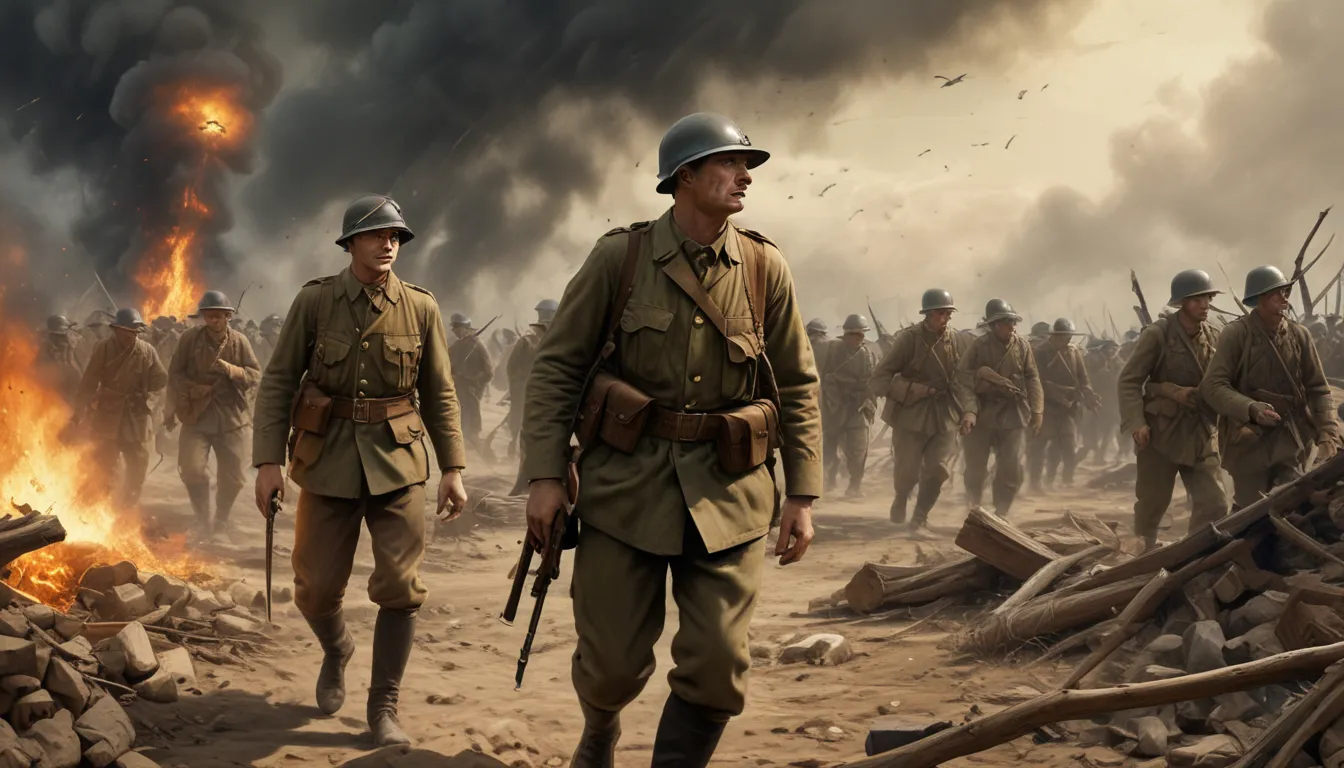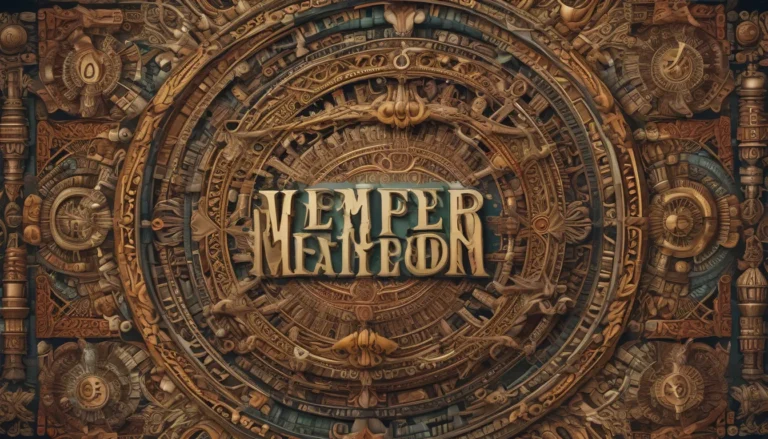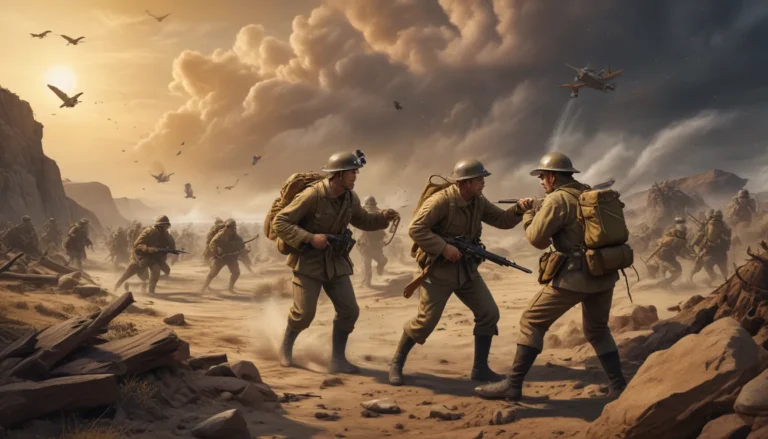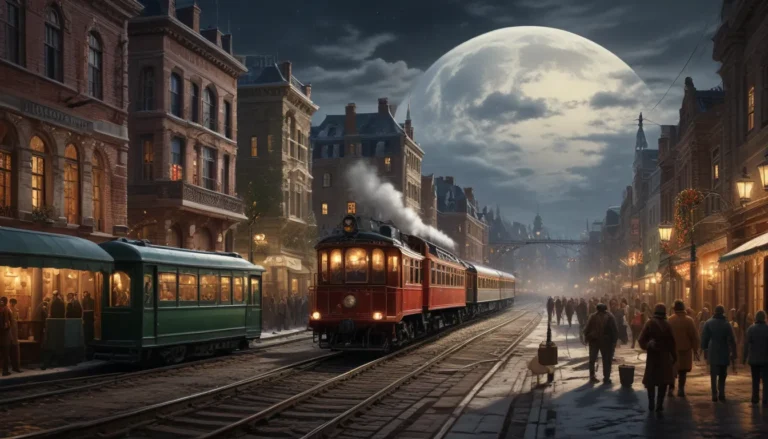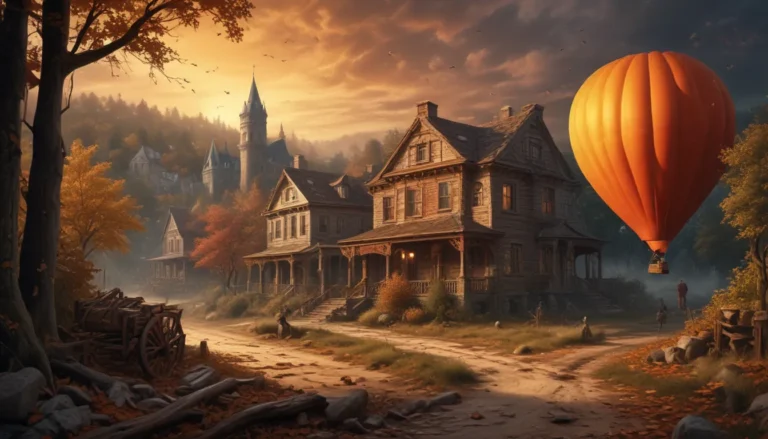The images in our articles may not match the content exactly. They are used to grab your attention, not to show the exact details in the text. The images complement the text but do not replace it.
World War I, also known as the Great War, was a conflict that shaped the course of history. From the alliances formed to the battles fought, the war left a lasting impact on the world. Let’s dive deeper into the various facts that define this significant period in history.
The Origins of World War I
At the onset of World War I in 1914, Europe was divided into two major alliances: The Triple Alliance and The Triple Entente. The Triple Alliance consisted of Austria-Hungary, Germany, and Italy, while The Triple Entente comprised Great Britain, Russia, and France.
Tension began to rise from the Balkan region, with two Balkan wars in 1912 and 1913 fueling nationalist ambitions. The assassination of Archduke Franz Ferdinand by Serbian nationalist Gavrilo Princip on June 28, 1914, served as the trigger that led Austria-Hungary to declare war on Serbia on July 28, 1914.
The Domino Effect of Alliances and Declarations
In the complex web of alliances, the leaders of Austria-Hungary sought assurance from German leader Kaiser Wilhelm II before declaring war on Serbia. Serbia, in turn, appealed to Russia for support, setting the stage for a conflict that would involve multiple nations.
Within a week, alliances were formed, pitting the Central Powers, including Austria-Hungary and Germany, against the Allied Powers, which included Serbia, Russia, Great Britain, Belgium, and France. The Central Powers operated under the Schlieffen Plan, a military strategy that aimed for a quick victory but ultimately led to a prolonged conflict.
Turning Points and Battles
As the war unfolded, pivotal battles shaped its course. The Battle of the Marne, which took place on September 6-9, 1914, marked the beginning of trench warfare on the Western Front. The Battle of Verdun, the longest battle of the war, and the Battle of the Somme, the bloodiest battle, underscored the brutal nature of World War I.
Germany’s advances were pushed back, and the tide began to turn against the Central Powers. The fall of 1918 saw a dramatic decline in their power, leading to Austria-Hungary’s internal collapse on November 4, 1918, and Germany’s eventual armistice on November 11, 1918.
Technological and Human Aspects of the War
World War I witnessed the debut of various military technologies, including tanks, machine guns, aircraft, and radio communications. Dogs and pigeons served as messengers, and propaganda posters played a crucial role in influencing public opinion.
The human cost of the war was immense, with millions of soldiers from both sides losing their lives or being wounded. The war also brought about social changes, such as the liberation of women and African Americans who assumed new roles and responsibilities during the conflict.
Legacy and Reflection
As the war came to an end, the Treaty of Versailles was signed on June 28, 1919, with hopes of creating a lasting peace. World War I, known by various names, ranks as the third deadliest conflict in history, leaving a profound impact on the world.
Today, films like Peter Jackson’s “They Shall Not Grow Old” bring the stories of World War I to life, showcasing the real faces and voices of those who experienced the war firsthand. Through exploring the facts and events of World War I, we gain a deeper understanding of this pivotal moment in history.
Conclusion
World War I remains a defining chapter in human history, with its impact reverberating through the decades. By delving into the facts and events of this conflict, we gain insight into the complexities of war and the resilience of the human spirit in the face of adversity. As we reflect on the legacy of World War I, we are reminded of the importance of peace, understanding, and remembrance in shaping a better future for generations to come.
